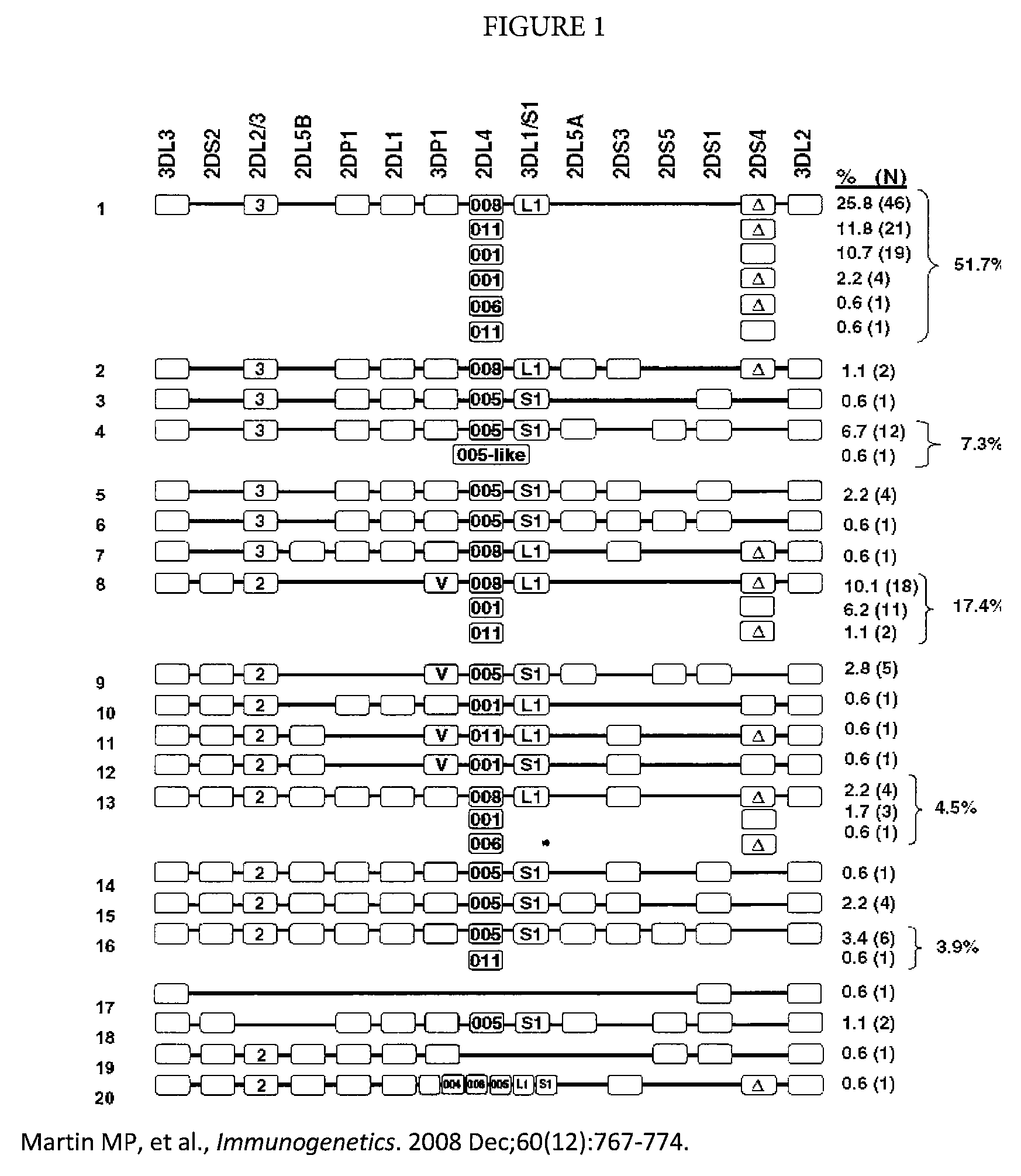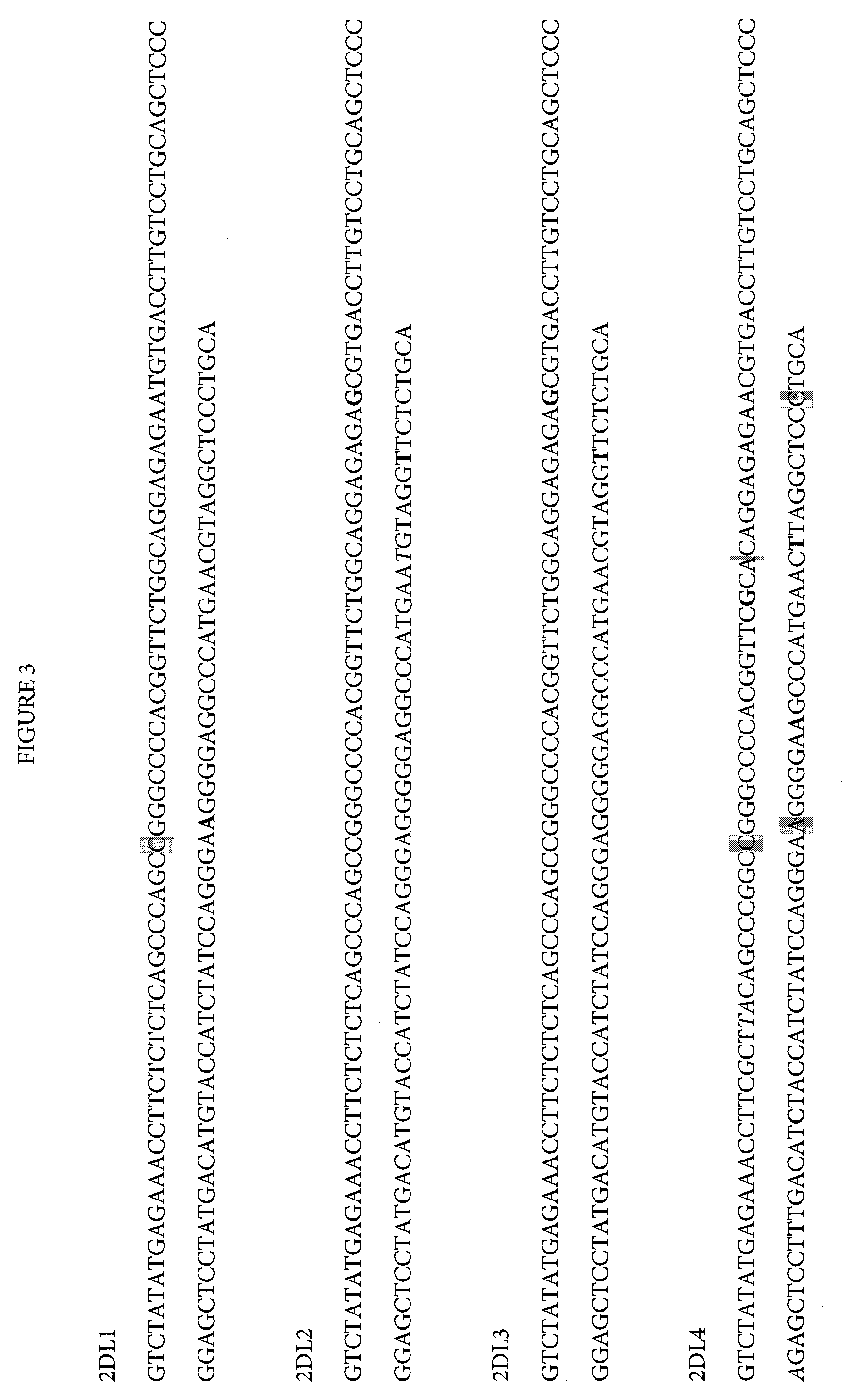Determination of KIR haplotypes associated with disease
- Summary
- Abstract
- Description
- Claims
- Application Information
AI Technical Summary
Benefits of technology
Problems solved by technology
Method used
Image
Examples
example 1
Obtaining the Sequences for Exon 5 in all KIR Genes in an Individual's Sample
[0078]As an example, 13 primer pairs suitable for amplification of all nine exons in the KIR genes are listed in Table 2. Each set of primers amplifies a single exon of the KIR genes, plus additional intronic sequence. Each primer also comprises a sample-specific identifier sequence, referred to as a Multiplex Identifier Tag (MID Tag), added at the 5′-end of each primer. Examples of the MID Tags are shown in Table 3. Each primer also includes a 4-bp library tag (not shown). These additional primer sequences are not shown in Table 2. Amplicon size shown in Table 2 includes the additional primer sequences: the 5-bp individual identification tag (MID Tag), and the 15-bp adapter sequence, including the 4-bp library tag.
[0079]
TABLE 2Exemplary KIR primersAMPLICONEXONPRIMERSPECIFICITYSIZE (bp)SEQUENCE 5′ to 3′1KAP061Fgeneric136CATCCTGTGYGCTGCTGKAP063RgenericATTCCYTTCCAGGACTCACC2KAP064Fgeneric206GTCCATCATGATCTTTCTT...
PUM
| Property | Measurement | Unit |
|---|---|---|
| concentration | aaaaa | aaaaa |
| rapid-response force | aaaaa | aaaaa |
| length | aaaaa | aaaaa |
Abstract
Description
Claims
Application Information
 Login to View More
Login to View More - R&D
- Intellectual Property
- Life Sciences
- Materials
- Tech Scout
- Unparalleled Data Quality
- Higher Quality Content
- 60% Fewer Hallucinations
Browse by: Latest US Patents, China's latest patents, Technical Efficacy Thesaurus, Application Domain, Technology Topic, Popular Technical Reports.
© 2025 PatSnap. All rights reserved.Legal|Privacy policy|Modern Slavery Act Transparency Statement|Sitemap|About US| Contact US: help@patsnap.com



